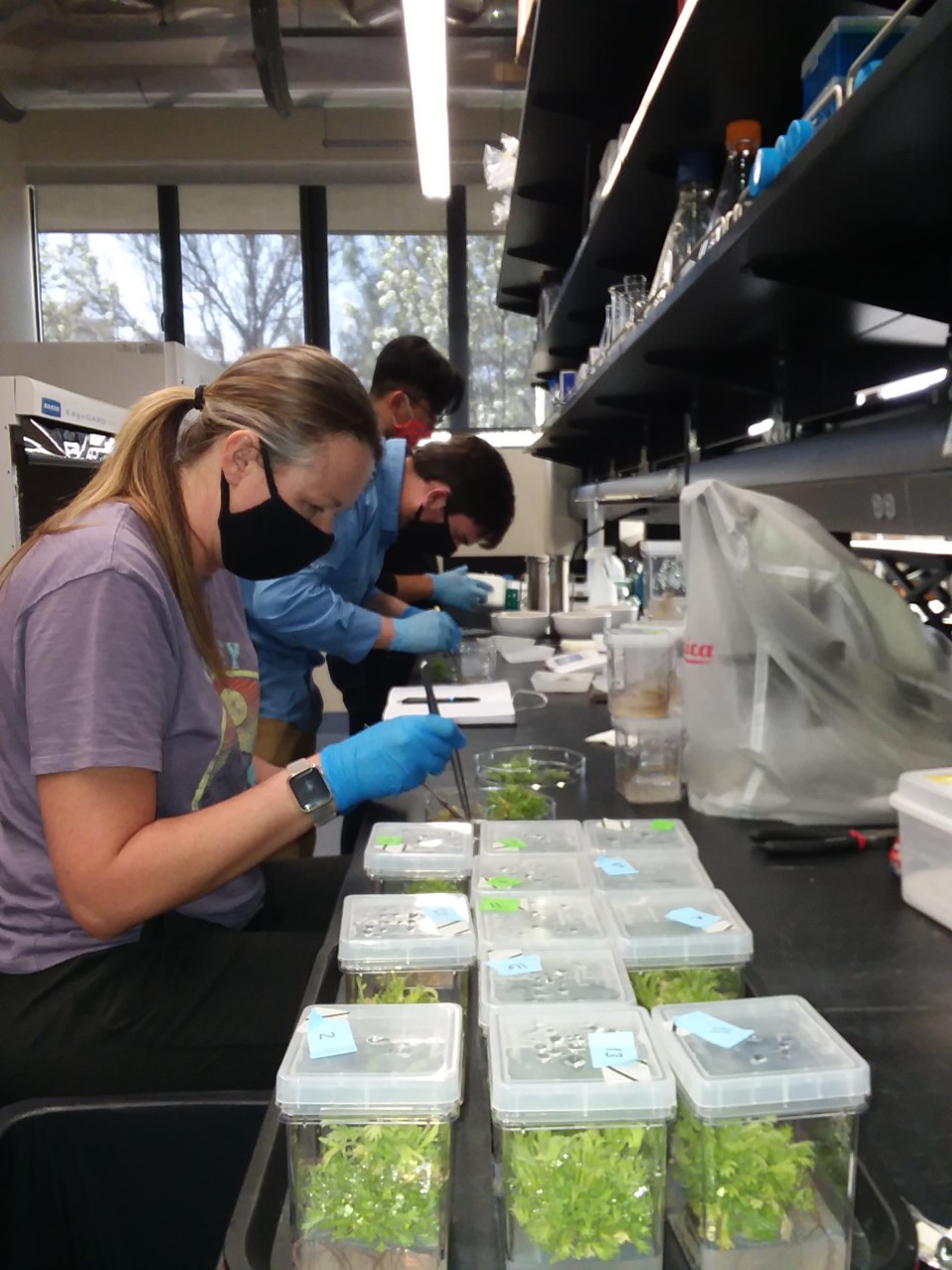
Big sagebrush (Artemisia tridentata) is a keystone species of the sagebrush steppe in the western United States. This research will provide information on how cellular and genetic processes change in plants that are stressed by drought. Ultimately, our goals are to develop tools and resources, such as the sagebrush genome and lines of genetically identical plants, to facilitate the study of how sagebrush responds to drought and better predict how the species will respond to climate change.
This work is part of an Established Program to Stimulate Competitive Research (EPSCoR) grant by the National Science Foundation, titled “Linking Genome to Phenome to Predict Adaptive Responses of Organisms to Changing Landscapes” (GEM3). The aim of this project is to understand the impacts of environmental and social change on Idaho’s landscapes, wildlife, and people. The overall focus of this grant is on the way in which genomes affect adaptive capacity in sagebrush ecosystems and Redband Trout habitat.
The sagebrush genome, which will be fully assembled by the end of 2021, will allow researchers to take a deep dive into the genomic mechanisms of drought adaptation, and fully characterize genes that give greater drought tolerance.
Having the ability to include plants of known genomes in our experiments will allow inferring the genetic contribution in responding to climate change across the sagebrush steppes. Such data can then be provided to the GEM3 Modeling team to best incorporate genetics into their models. Such research may ultimately facilitate the reintroduction of sagebrush in degraded habitats.
The Idaho GEM3 multi-disciplinary project is seeking to understand how genetic diversity and phenotypic plasticity affect sagebrush’s response to environmental change, specifically drought, shaping both population response and adaptive capacity. Understanding mechanisms underpinning drought adaptation require a genome to phenome approach. This approach requires a reference genome representing genotypes adapted to particular environmental conditions.
Sequencing and assembling a genome can be a difficult task, especially for relatively large genomes, like that of sagebrush, which is three times larger than the human genome. To get enough plant material to extract sufficient amounts of DNA for sequencing, GEM3 researchers use in-vitro propagation to make hundreds of genetically identical plantlets. This method is an invaluable resource, not only to produce the biomass for genome sequencing, but also to conduct genotype-by-environment (G×E) experiments.
